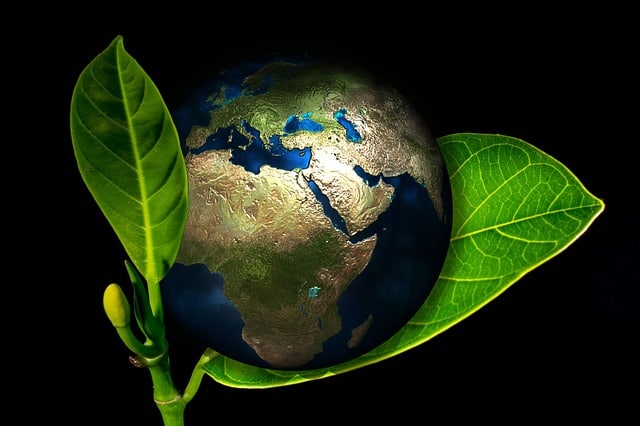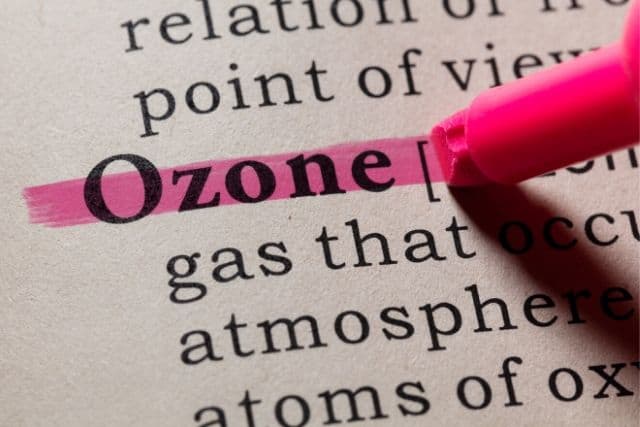Every time someone talks about “global warming” one of the terms that we’re likely to hear within that context is the ozone layer. But have you ever wondered what exactly the ozone layer is?
Well, that’s what we’re about to examine in detail.
However, to understand the ozone layer, it would be helpful to know the different layers of the atmosphere.
The earth’s atmosphere has many layers, each playing a significant role.
The first layer stretching approximately 10 kilometers upwards from the earth’s surface, is known as the troposphere. It’s in this range where a lot of human activities, such as gas balloons, mountain climbing, and small aircraft flights, take place.
The next layer, coming above the troposphere, stretches approximately 15 to 60 kilometers and is called the stratosphere.
Now, the ozone layer sits in the lower region of the stratosphere from about 20-30 kilometers above the earth’s surface. The thickness of the ozone layer is about 3 to 5 mm, but it pretty much fluctuates depending on the season and geography.
But what exactly is it?
Well, the ozone layer is just what the name says — a deep layer in the earth’s atmosphere that contains ozone, a naturally occurring molecule containing three oxygen atoms. These ozone molecules form a gaseous layer in the upper atmosphere called the stratosphere.
Within the stratosphere is a specific lower region called the Ozonosphere, characterized by a relatively higher ozone concentration. This region can be found at an altitude ranging from 15 to 35 km (9 to 22 miles) above the Earth’s surface.
The total mass of the ozone layer is 3 billion metric tons. That may seem already a lot, but trust me, it’s too little, translating to only 0.00006% of the atmosphere.
Usually, the concentration of ozone molecules in the ozone layer is usually under 15 parts per million, meaning there are only 15 ozone molecules in every 10 million molecules of air — and that’s the best concentration there is.
Outside this region, the normal concentration is only 0.3 parts per million, which translates to only 3 parts of ozone molecules in every 10 million air molecules — and that’s too low.
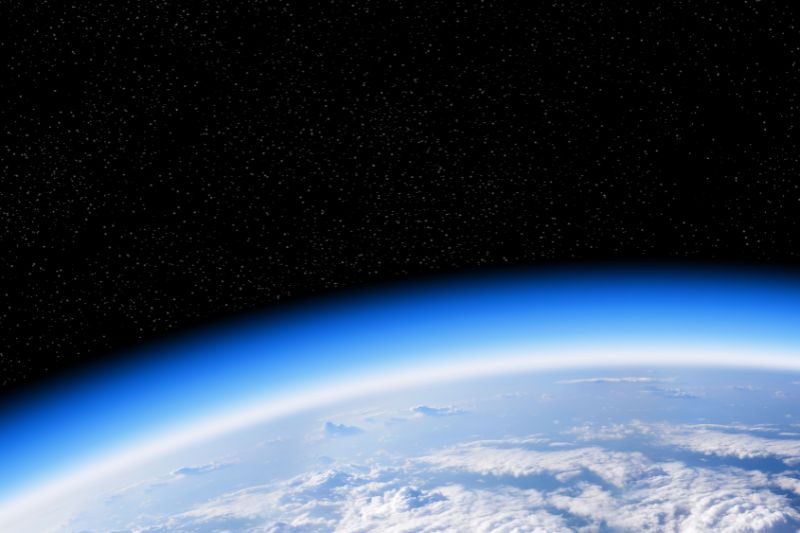
Now, the ozone layer protects life on Earth from strong ultraviolet radiation that comes from the sun.
Ultraviolet rays are harmful rays that can increase the risk of deadly disorders like skin cancer, cataracts, and damage to the immune system. These rays can also destroy single-cell organisms, terrestrial plant life, and aquatic ecosystems.
The ozone layer, discovered in 1913 by the French physicists Charles Fabry and Henri Buisson, has the capability to absorb 97-99% of the harmful ultraviolet radiation that the sun emits. This keeps the UV from causing long-term devastating effects on human beings as well as plants and animals.
Composition of the Ozone Layer
It comes as a surprise that the same UV rays form the bulk of the ozone layer. Ozone (O3) is an extraordinary kind of oxygen composed of 3 oxygen atoms instead of the normal 2 oxygen atoms.
This layer normally develops when a few kinds of electrical discharge or radiation splits the 2 atoms in an oxygen(O2) molecule, which then independently reunite with molecular oxygen to form ozone. It’s this layer that has been shielding life on planet Earth for billions of years, but it’s now being worn out by human activities.
People began to value the importance of this protective layer when scientists released a research finding suggesting that certain human-made chemicals known as chlorofluorocarbons managed to reach the stratosphere and depleted the layer via a profound series of chemical reactions.
The results of this research study prompted the signing of a global treaty known as the Montreal Protocol in 1973. This treaty helped reduce the production of these harmful human-made chemicals.
These targeted efforts have led to the ozone layer’s recovery in recent years, resulting in improved protection against the sun’s UV rays.
However, there is a concerning development of ground-level ozone due to sun rays interacting with atmospheric pollution. This poses a serious threat to human health.
In some individuals, it can lead to complications in breathing, particularly during the summer when pollution is rampant in cities where the air is static.
Why is the Ozone Layer Necessary?
The ozone layer is useful because of its ability to block solar radiations of wavelengths less than 290 nanometers from reaching the Earth’s surface. In this process, it also absorbs dangerous ultraviolet radiation.
However, the problem is that as the ozone layer depletes, the life forms on Earth become more exposed to UV, disrupting susceptible terrestrial and aquatic ecosystems.
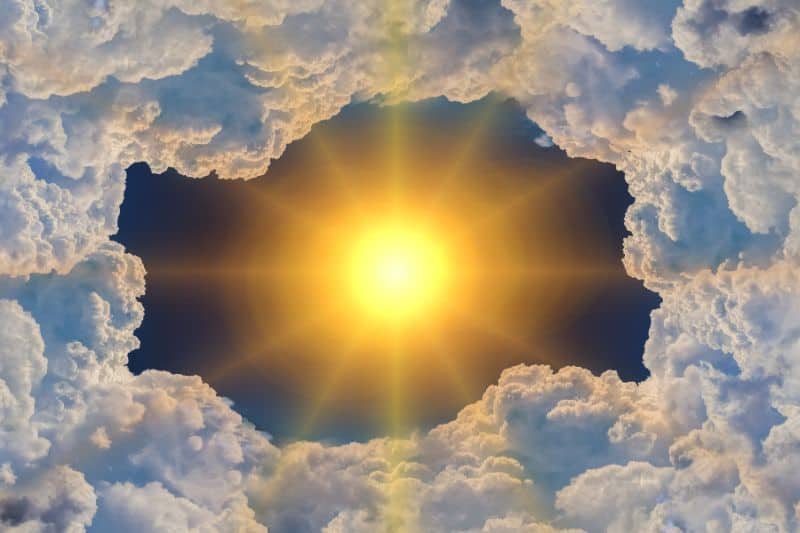
In addition, ultraviolet radiation could destroy organic matter. This detrimentally affects plants and plankton, which serve as crucial food sources for land and sea animals, respectively.
And for humans, excessive exposure to ultraviolet radiation leads to higher risks of cancer (especially skin cancer) and cataracts.
It is calculated that every 1 percent decrease in the ozone layer results in a 2-5 percent increase in the occurrence of skin cancer. But that’s not all. Other ill effects of the depletion include an increase in the incidence of cataracts, sunburns and suppression of the immune system.
Causes of Ozone Layer Depletion
Credible scientific studies have substantiated that the cause of ozone layer depletion is human activity, specifically, human-made chemicals that contain chlorine or bromine.
These chemicals are widely known as ODS, an acronym for Ozone-Depleting Substances. Scientists have observed a reduction in stratospheric ozone since the early 1970s. It is found to be more prominent in Polar Regions.
Ozone-Depleting Substances have been proven eco-friendly, very stable and non-toxic in the atmosphere below. This is why they have gained popularity over the years.
However, their stability comes at a price; they can float and remain static high up in the stratosphere.
When up there, ODS are comfortably broken down by the strong UV light, and the resultant chemical is chlorine and bromine, 2 gases known to deplete the ozone layer at supersonic speeds.
They do this by simply stripping off an atom from the ozone molecule. One chlorine atom can break down astounding 100,000 ozone molecules before it’s removed from the stratosphere — and that’s just an atom!
Bromine is even more potent. In fact, a Bromine atom is believed to be 40 times more destructive than chlorine molecules.
These ozone-depleting substances persist in the atmosphere for an extended period, and their presence is expected to continue for many years.
As a result, the ozone-depleting substances that humans have introduced into the atmosphere over the past 90 years are still in transit and will continue contributing to ozone depletion.
The chief ozone-depleting substances include chlorofluorocarbons (CFCs), carbon tetrachloride, hydrochlorofluorocarbons (HCFCs) and methyl chloroform. Halons, sometimes known as brominated fluorocarbons, also contribute greatly to ozone depletion.
However, their application is greatly restricted since they are utilized in specific fire extinguishers. The downside to halons is they are so potent that they can deplete the ozone layer 10 times more than ozone-depleting substances. But that’s not all about halons.
They’re greenhouse gases that contribute to global warming, albeit with 3500 times the potency of carbon dioxide, another greenhouse gas.
Scientists in this age are working around the clock to develop Hydrofluorocarbons (HFCs) to take the place of hydrochlorofluorocarbons (HCFCs) and chlorofluorocarbons (CFCs) for use in vehicle air conditioning.
Hydrochlorofluorocarbons are powerful greenhouse gases, but they cannot deplete ozone. On the other hand, chlorofluorocarbons significantly contribute to climate change, which means Hydrofluorocarbons continue to be the better alternative until safer alternatives are available.
There are two regions in which the ozone layer has depleted.
- In the mid-latitudes, for example, over Australia, the ozone layer is thinned. This has led to an increase in UV radiation reaching the earth. It is estimated that about 5-9% thickness of the ozone layer has decreased, increasing the risk of humans to over-exposure to UV radiation owing to the outdoor lifestyle.
- In atmospheric regions over Antarctica, the ozone layer is significantly thinner, especially in the spring season. This has led to the formation of the the ‘ozone hole’. Now, ozone holes refer to the regions of severely reduced ozone layers. Usually, these holes form over the poles during the onset of the spring seasons. One of the largest such holes appears annually over Antarctica between September and November.
Natural Causes of Depletion of the Ozone Layer
The ozone layer is affected by certain natural phenomena such as Sun-spots and stratospheric winds. But this has been found to cause not more than 1-2% depletion of the ozone layer, and the effects are also thought to be only temporary.
It is also believed that the major volcanic eruptions (mainly El Chichon in 1983 and Mt. Pinatubo in 1991) have also contributed towards ozone depletion.
Man-made Causes of Depletion of the Ozone Layer
The main cause for ozone depletion is the excessive release of chlorine and bromine from man-made compounds such as chlorofluorocarbons (CFCs). CFCs (chlorofluorocarbons), halons, CH3CCl3 (Methyl chloroform), CCl4 (Carbon tetrachloride), HCFCs (hydro-chlorofluorocarbons), hydrobromofluorocarbons and methyl bromide are found to have a direct impact on the depletion of the ozone layer. These are categorized as ozone-depleting substances (ODS).
The problem with Ozone-Depleting Substances (ODS) is that they are not washed back in the form of rain on the earth and, in fact remain in the atmosphere for quite a long time. With so much stability, they are transported into the stratosphere.
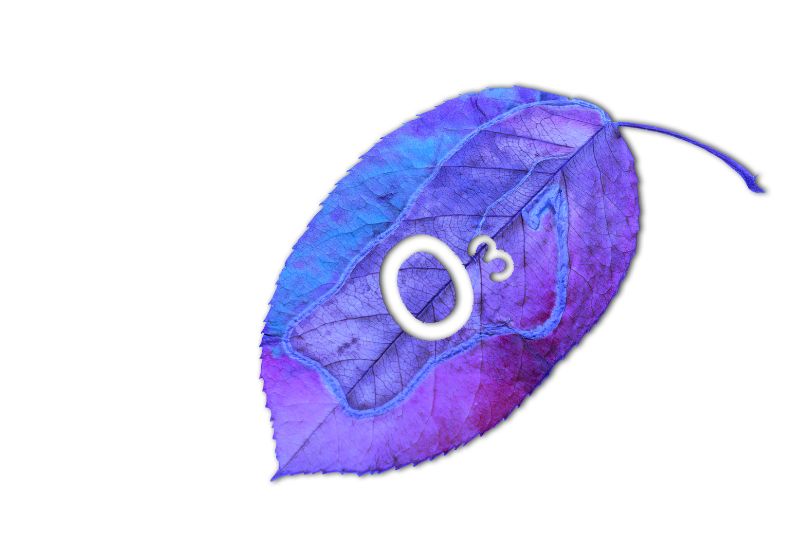
The emission of ODS accounts for roughly 90% of the total depletion of the ozone layer in the stratosphere. These gases are carried to the stratosphere layer of the atmosphere, where ultraviolet radiation from the sun breaks them to release chlorine (from CFCs) and bromine (from methyl bromide and halons).
Main Ozone Depleting Substances (ODS)
We’ve got several ODS. Some of the common ones include:
1. Chlorofluorocarbons (CFCs)
It’s billed as the most extensively utilized ozone-depleting substance, attributing to more than 80% of overall ozone depletion. CFCs were utilized as a coolant in home appliances like freezers, refrigerators and air conditioners in both buildings and cars that were manufactured before 1995.
This substance is usually contained in dry cleaning agents, hospital sterilants, and industrial solvents. The substance is also used in foam products like mattresses, cushions, and home insulation.
2. Hydrofluorocarbons (HCFCs)
Hydrofluorocarbons have, over the years, served in place of Chlorofluorocarbons. They are not as harmful as CFCs to the ozone layer.
3. Halons
It’s especially used in selected fire extinguishers in scenarios where the equipment or material could be devastated by water or extinguisher chemicals.
4. Carbon Tetrachloride
Also used in selected fire extinguishers and solvents.
5. Methyl Chloroform
This compound is commonly utilized in industries for cold cleaning, vapor degreasing, chemical processing, adhesives and some aerosols.
Serious Effects of Ozone Depletion
Of course, there are so many adverse effects of ozone depletion. These include but are not limited to:
1. Damage to Human Health
If the ozone layer is depleted, humans will be overly exposed to strong UV light. Overexposure to strong UV light causes skin cancer, cataracts, sunburns, weakening of the immune system and quick aging.
2. The Devastation to the Environment
Many crop species are vulnerable to strong UV light, and overexposure may lead to minimal growth, photosynthesis and flowering.
Some of the crop species vulnerable to UV light include barley, wheat, corn, oats, rice, broccoli, tomatoes, and cauliflower to name a few. Forests equally bear the brunt of ozone depletion.
3. The Threat to Marine Life
Certain marine life, especially plankton, is greatly impacted by exposure to strong ultraviolet rays. In the aquatic food chain, planktons appear high up. As such, if they decrease in number due to ozone layer destruction, the marine food chain would be disrupted in many ways.
Also, overexposure to sun rays could reduce the fortunes of fishers. On top of that, certain species of marine life have been greatly affected by overexposure to ultraviolet radiation at their early stage.
4. Effect on Animals
In domesticated animals, too much Ultraviolet radiation could also lead to skin and eye cancer.
5. Impacts Certain Materials
Materials like plastics, wood, fabrics, and rubber are massively degraded by too much ultraviolet radiation
Solutions to Ozone Depletion
Thankfully, even with the damage caused on the ozone and the consequences that has brought to our planet, there are still a few things that can be done to mitigate the level of damage and make the planet a better place.
1. Desist From Using Pesticides
Pesticides are great chemicals to rid your farm of pests and weeds. But one big downside of them is that they contribute enormously to ozone layer depletion.
The surefire solution to eliminate pests and weeds is to apply natural methods. Just weed your farm manually and use alternative eco-friendly chemicals to alleviate pests.
2. Discourage Driving of Private Vehicles
The easiest technique to minimize ozone depletion is to limit the number of vehicles on the road. These vehicles emit a lot of greenhouse gases that eventually form smog, a catalyst in the depletion of the ozone layer.
3. Utilize Environmentally Friendly Cleaning Products
Most household cleaning products are loaded with harsh chemicals that eventually find their way into the atmosphere, eventually contributing to the degradation of the ozone layer. Use natural and environmentally friendly cleaning products to arrest this situation.
4. Prohibit the Use of Harmful Nitrous Oxide
The Montreal Protocol, formed in 1989, helped greatly in limiting Chlorofluorocarbons (CFCs). However, the protocol never covered nitrous oxide, a known harmful chemical that can destroy the ozone layer. Nitrous oxide is still in use today. Governments must take action now and outlaw nitrous oxide use to reduce the rate of ozone depletion.
References:
